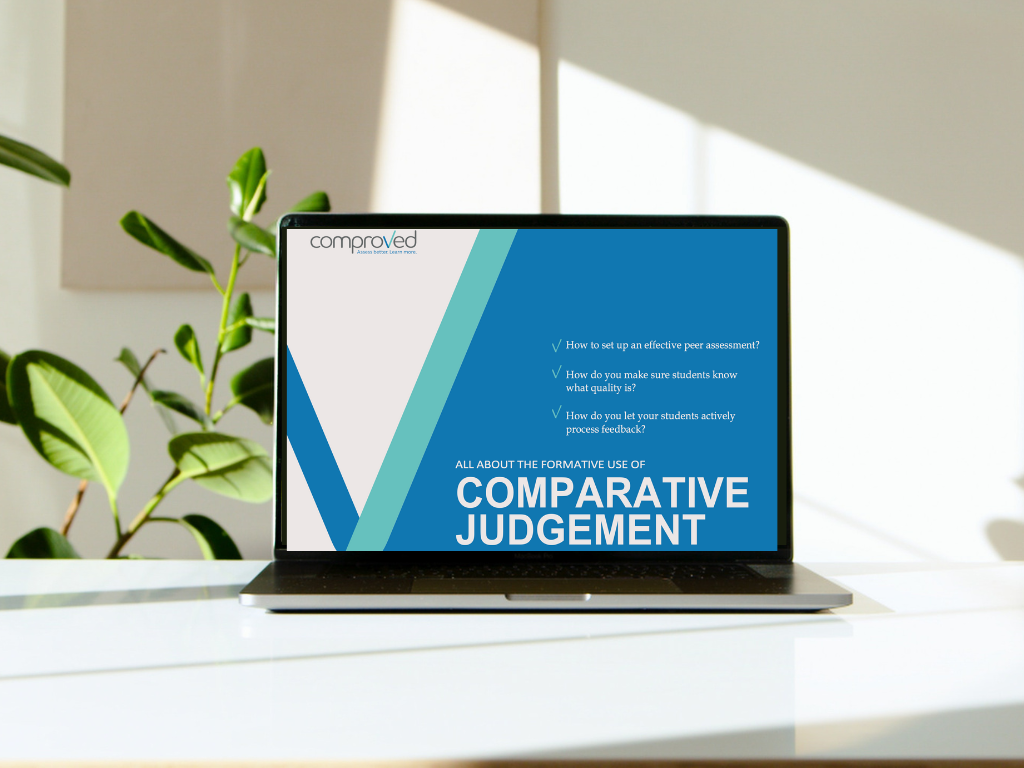
Download guide
How to set up an effective peer assessment?
How do you make sure students know what quality is?
How do you get students to actively process feedback?
Find out everything in our guide on the formative use of comparative judgement.

What our users think of the method:
Who are we?
The three founders of Comproved are educational scientists with a heart for teaching, evaluation, learning and feedback. They continue their scientific research project in collaboration with the University of Antwerp, Ghent University and imec in the spin-off Comproved.
They love guiding teachers through their evaluation challenges and are always ready to help with advice and assistance.

Why comparative judgement?
Formative evaluation has – rightly – gained a more prominent place in evaluation practices. That you can do something with comparative judgement for this type of evaluation, we want you to discover in this guide.
Feedback is a core element of formative evaluation. In this guide, we focus on the principles needed for an effective feedback process. Then we talk about how comparative judgement can help you put these principles into practice. Indeed, comparative judgement creates a lot of learning opportunities.
What are the main benefits of comparative judgement and the Comproved comparing-tool?
Comparative judgement is a powerful way to promote quality awareness among students.
In the comparing tool, we have built in functionalities that promote students' feedback literacy.
The comparing tool supports students in taking follow-up steps in response to the received feedback with an action plan.
Download the guide and get answers to all your questions about the formative use of comparative judgement!
"*" indicates required fields
